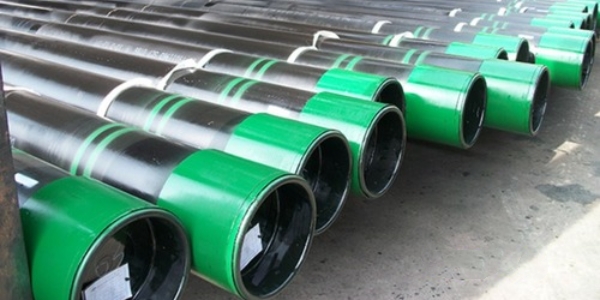As a channel for the flow of oil, gas and operating fluids, casing plays a vital role in the production process of oil and gas wells. However, as long as oil and gas well production operations are carried out, damage to the casing will occur. Therefore, this article will mainly introduce the characteristics and hazards of oil casing damage.

Characteristics Of Oil Casing Damage:
1) The water injection well casing is damaged
When the casing of a water injection well is damaged, well sections that originally did not absorb water also begin to absorb water, resulting in an increase in water-absorbing well sections. When the injection pressure remains unchanged, the injection volume of the water injection well will increase significantly, and when the injection volume reaches a certain point, the injection pressure will decrease significantly, so the corresponding groundwater injection indication curve will display: the curve moves to the right or downwards .
2) The production well casing is damaged
Damage to production well casing is mainly judged by the properties of the fluid produced by the oil well. Compared with water injection wells, it exhibits more characteristics.
- Increased water content in oil wells. Before and after the casing is damaged, the water content of the produced fluid will increase significantly. Especially when the upper casing is damaged, a large amount of shallow water will flow back to the bottom of the well, causing the bottom hole pressure to increase, the production pressure difference to decrease, and even shallow water to enter the oil layer. Therefore, the water content of the oil well will increase significantly, and a large amount of casing damage will occur. The well's water content will soon reach 100%.
- Decreased mineralization. Since there is a certain difference in salinity between water layer and oil layer water, especially the salinity of shallow water is much lower than that of oil layer water, when the casing is damaged, shallow water enters the wellbore, resulting in a decrease in production. The salinity of the water drops dramatically.
- The liquid level rises. When the casing is damaged, the formation that originally did not produce liquids begins to produce liquids. Especially when the casing in the upper part of the oil well is damaged, the shallow water originally accumulated outside the casing will enter the wellbore in a short period of time. Since the displacement of the pump is fixed, it will cause the oil well liquid level to rise significantly.
- Water type changes. Since water from different formations contains different types of mineral ions, when the casing is damaged, water from different formations mix together, causing changes in the mineral ion composition of the produced water, resulting in changes in the water type of the produced water.
Hazards Of Oil Casing Damage:
Whether it is produced oil, natural gas or working fluid, as long as it passes through the casing, it will cause damage to the casing, especially the fluid. In addition to damage to the casing caused by the fluid itself, the pressure of injecting the fluid can also cause stress damage to the casing. Especially when an oil and gas well has been developed for a period of time, or even in the later stages of oil and gas well production, casing damage will become a key factor affecting the production of the oil and gas well. For example, in recent years, casing bending, diameter reduction deformation, staggered breaks, and punctures have occurred in the Tahe Oilfield, which have seriously affected the normal production of oil and gas wells, and some wells have even been scrapped.

 English
English Español
Español




 Tel : +86-18565811709
Tel : +86-18565811709 Email :
Email : 

 News
News




